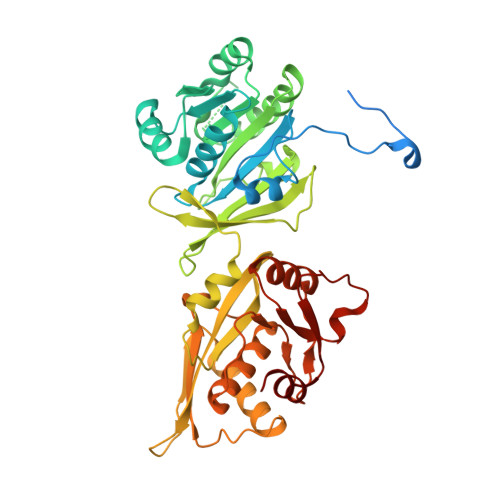Bacterial RadA is a DnaB-type helicase interacting with RecA to promote bidirectional D-loop extension.
Marie, L., Rapisarda, C., Morales, V., Berge, M., Perry, T., Soulet, A.L., Gruget, C., Remaut, H., Fronzes, R., Polard, P.(2017) Nat Commun 8: 15638-15638
- PubMed: 28561029
- DOI: https://doi.org/10.1038/ncomms15638
- Primary Citation of Related Structures:
5LKM, 5LKQ - PubMed Abstract:
Homologous recombination (HR) is a central process of genome biology driven by a conserved recombinase, which catalyses the pairing of single-stranded DNA (ssDNA) with double-stranded DNA to generate a D-loop intermediate. Bacterial RadA is a conserved HR effector acting with RecA recombinase to promote ssDNA integration. The mechanism of this RadA-mediated assistance to RecA is unknown. Here, we report functional and structural analyses of RadA from the human pathogen Streptococcus pneumoniae. RadA is found to facilitate RecA-driven ssDNA recombination over long genomic distances during natural transformation. RadA is revealed as a hexameric DnaB-type helicase, which interacts with RecA to promote orientated unwinding of branched DNA molecules mimicking D-loop boundaries. These findings support a model of DNA branch migration in HR, relying on RecA-mediated loading of RadA hexamers on each strand of the recipient dsDNA in the D-loop, from which they migrate divergently to facilitate incorporation of invading ssDNA.
Organizational Affiliation:
Laboratoire de Microbiologie et Génétique Moléculaires, UMR5100, Centre de Biologie Intégrative (CBI), Centre National de la Recherche Scientifique (CNRS), Université de Toulouse, UPS, Toulouse F-31062, France.
















